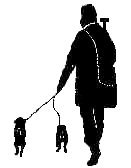
.
|
|
In 1560, Count Jacques du Fouilloux's published the first book to show pictures of dogs entering fox and badger dens. La Vernarie (The Art of Hunting) was plagiarized by George Turberville who translated it and put it out as his own work. Turberville, however, called Fouilloux's dogs "terriers" rather than "bassets". Fouilloux's "bassets" were probably early dachshunds, as terriers were net yet common on the Continent. >>To read more |
|
John Muir observed that if you pulled on any one thing in nature, you found it was connected to everything else. That is certainly true for terriers, whose history is deeply connected with sheep, game farms, poaching and mounted fox hunts, which in turn are deeply connected to the Enclosure Movement and the land clearances of the 18th and 19th Century. This is a history of terrier work like no other -- with clickable sources. >> To read more |
|
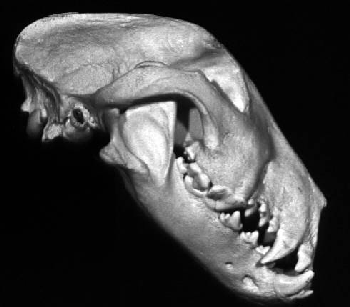 From Rosettes to Ruin From Rosettes to RuinIrish Setters, once famed at finding birds, are now so brain-befogged they can no longer find the front door. Cocker Spaniels, once terrific pocket-sized birds dogs, have been reduced to poodle-coated mops incapable of working their way through a field or fence row. Fox terriers are now so large they cannot go down a fox hole. Why do rosettes so often lead to ruin? >> To read more |
|
 Inbred Thinking Inbred ThinkingThe Kennel Club does not "just register" dogs -- it requires Clubs to enter into a closed registry system. A closed registry with a small gene pool undergoing a further tightening due to sire selection and overuse guarantees inbreeding and a steady increase in the occurrence of negative genetic traits. How is it that the Kennel Club came to adopt this system ... and why can it not change? The answer lies, in no small part, to the misapplication of Darwin evolutionary principles by his cousin, Francis Galton. >> To read more |
|
The world of working terriers is not immune to flim-flam and fantasy. Some fantasy diggers are AKC owners who imagine their dogs were "bred to work" when in fact their terrier's ancestors probably have not seen the inside of a den pipe in 20 generations. Some folks think they have working dogs because their pooch catches an occasional rat or mouse. And then there are the self-styled "hard men" who have never dug a dog at all. >> To read more |
|
Across the U.S., we have more whitetail deer, red fox, raccoon, coyote, possum, groundhog, Gray fox, black bear, wolf, duck, geese, moose, beaver, turkey, elk, alligator, cougar and bald eagles than we have had at any time in the last 100 years. And the numbers keep going up. The world of working terriers is better too. No generation has ever had more spare time or better dogs more easily obtained. No generation has ever had easier access to farms brimming over with suitable working terrier quarry. >> To read more |
|
Almost all the dogs you see at Kennel Club shows are too big to actually work. In fact, this appears to be true in Great Britain as well, where most hunt terriers are small unregistered Jack Russells, patterdale-type fell terriers, crosses, or dogs of “pedigree unknown.” Don't tell that to the Kennel Club folks, however. >> To read more |
|
While a 14- or 15-inch tall terrier can negotiate an 81-square inch go-to-ground tunnel with ease, this same dog will find it difficult to negotiate a natural earth which may have an interior space of less than 35-square inches – just enough room to allow a fox to slip through with ease. Where then did these enormous go-to-ground tunnels come from? >> To read more |
|
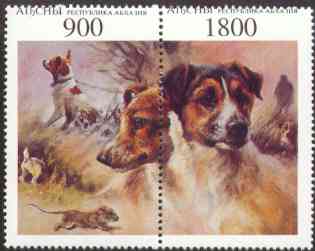 Mistakes and Regrets Mistakes and RegretsIf you dig, you will make mistakes. If you are smart, you will learn from them. This list of 20 common problems is a litany of what to avoid, a caution about what to remember, and an etiquette guide for the new digger. If you are new to digging this list can save you a lot of grief. >> To read more |
|
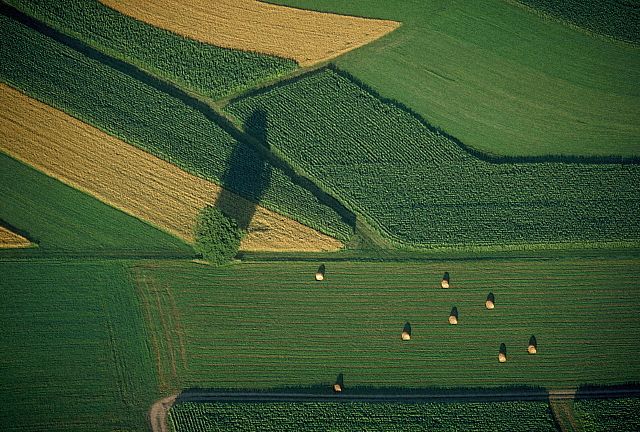 The
Geography of American Working Terriers The
Geography of American Working TerriersIn the U.S., the bread-and-butter quarry of the working terrier is the groundhog. The range of this animal roughly delineates the scope of most terrier work in the U.S. The reason for this is simple: raccoons cannot dig their own dens, and neither can possums. Without hounds to drive fox to ground, our fox-digging season is very short -- generally only 10 weeks long. Where groundhogs exist, terrier work is year-round and both raccoon and fox are more common. >> To read more |
|
Just a few pictures of American dogs and quarry, with some very nice shots of notably large groundhogs and possums. Pictures tell a story, though a lot of story tellers seem to have no pictures. We're still looking for a shot of a 30-pound raccoon worked by a terrier in an earth den. >> To read more |
|
In recent years, protectors of at least two working breeds -- the Border Collie and the Jack Russell Terrier -- have gone to war with the AKC in an effort to protect the working qualities of their dogs. Within three years of drafting Jack Russells into the world of "blue blazer rosette-chasers," the AKC parent club was considering abandoning all chest size criteria -- the only working attribute that can be judged in the ring. >> To read more |
|
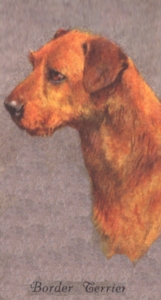 Four Hundred American
Working Terriers Four Hundred American
Working TerriersWe compiled a list of over 400 working American terriers and their height. Here's what we found: The average size of American dogs that have worked red fox (90 in sample) was 12.18 inches. The average size of American dogs that have worked Gray fox (11 in sample) was 11 inches. The average size of dogs that have worked raccoon (over 175 dogs in sample) was 12.17 inches. The average size of dogs that have worked opossum (over 120 dogs in sample) was 12.22 inches. The average size of dogs that had worked groundhog (over 250 dogs in sample) was 12.28 inches. There were more working bitches than dogs due to a size-bias for smaller females. >> To see the data >> To take a look at the bell curve |
|
Everyone has a bit of equipment they have customized, a small "nicety" they find useful in the field, or a tip on how they have solved a certain problem a certain way. Here are ten small tips, none of which are particularly novel, but which some folks might find of use. >> To read more |
|
An animal "behaviorist" argues that "There is very little value in breeding dogs for their original purpose because those skills are no longer required. The majority of dogs in America are pets, not hunters, herders or ratters." >> To read this stem-winder |
|
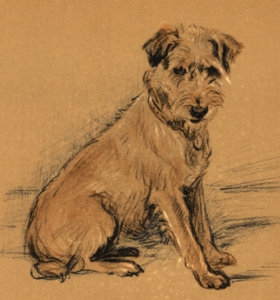 Autopsy
of a Standard Autopsy
of a StandardMany people assume that Kennel Club standards for various breeds of working terriers have been drawn up by people that actually work their dogs. In fact, this is not necessarily so -- standards tend to be dictated by large breeders, not workers. Even when a standard is clear, as it is with the border terrier, it is often ignored or bowdlerized. >> To read more In the field, the most important judge never looks up the leash. >>To read more |
|
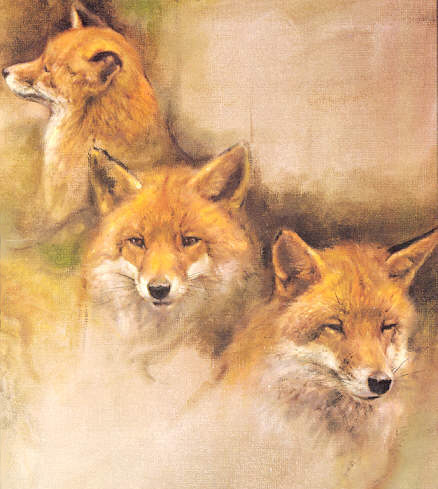 The
Measured Size of Red Fox The
Measured Size of Red FoxThe Eastern red fox is an import to the U.S. brought over before 1650 as a sport animal for mounted hunters frustrated by the propensity of native Grey fox to climb trees when pursued. Not surprisingly, our red fox is exactly the same size as its European cousin. Dr. Paolo Cavallini goes through the data on red fox size all over the world and finds chest measurements are surprisingly consistent -- and surprisingly small. >> To read more |
|
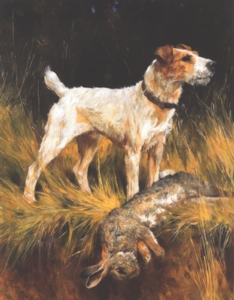 The
Burns Report on Working
Terriers The
Burns Report on Working
TerriersExcerpts from the National Working Terrier Federation's report to the Committee of Inquiry into Hunting with Dogs in England and Wales ("the Burns Report"): "The terrier's primary role is not to fight with it's quarry. The role is to locate the quarry below ground and to bark at it continuously, either causing it to leave the earth, or alternatively to indicate where in the earth the quarry is located, in order that it can be dug to and dispatched." >> To read more |
|
About three-fourths of all groundhogs do not survive their first year, and about one-third of adults perish every year as well. The single greatest killer of adult groundhogs appears to be pneumonia -- groundhogs burrow in for the winter and perish from lung infections brought on by cold, wet dens. >> To read more |
|
|
